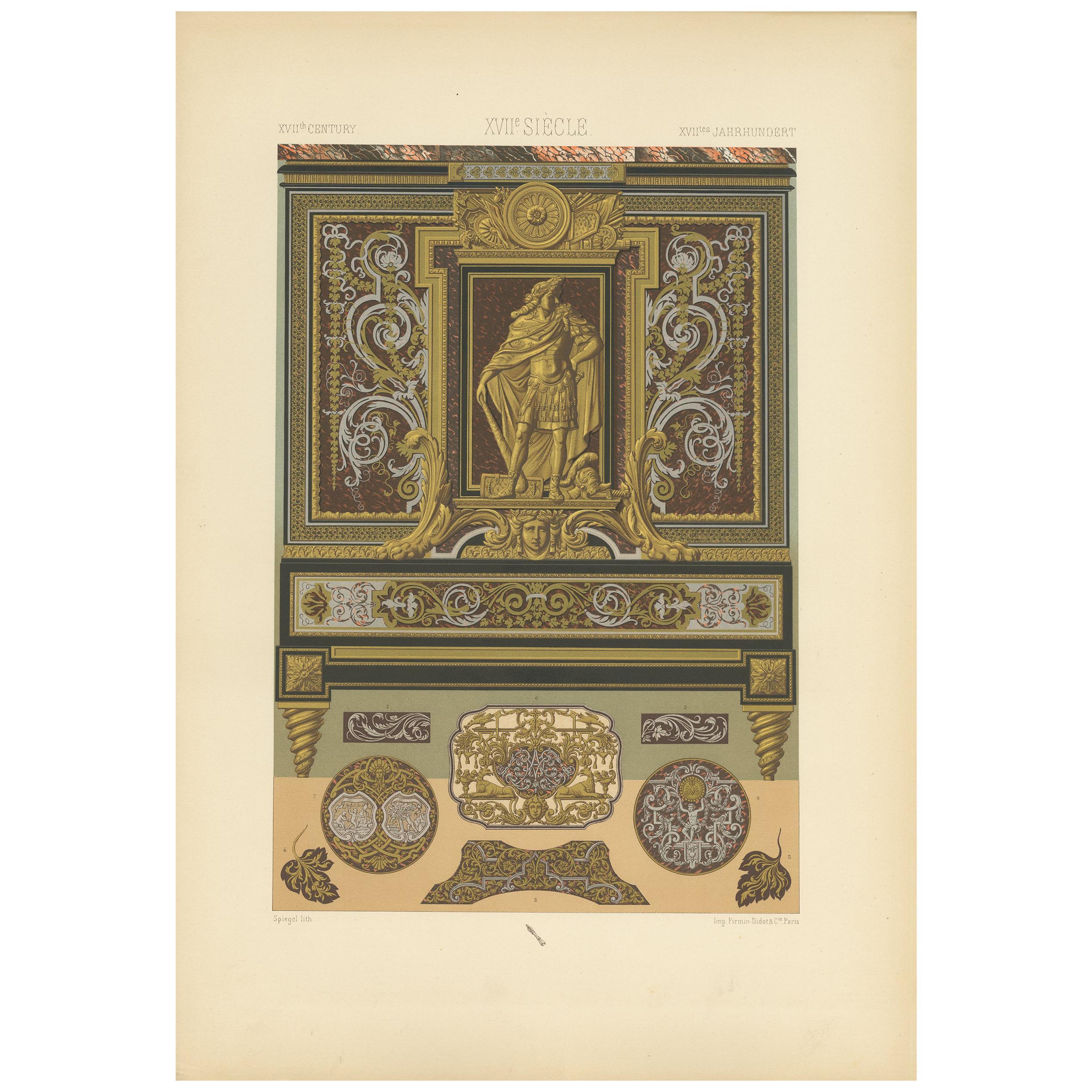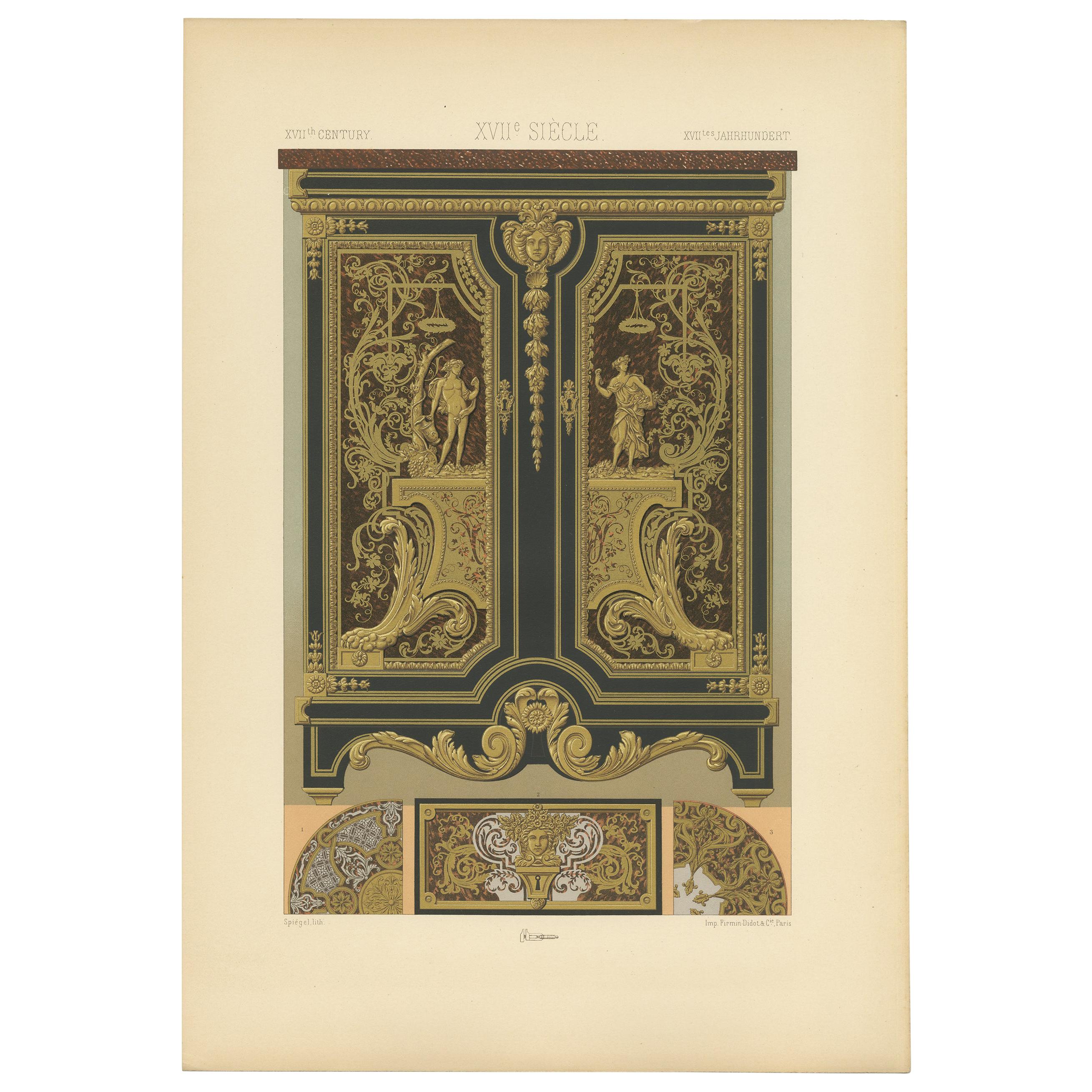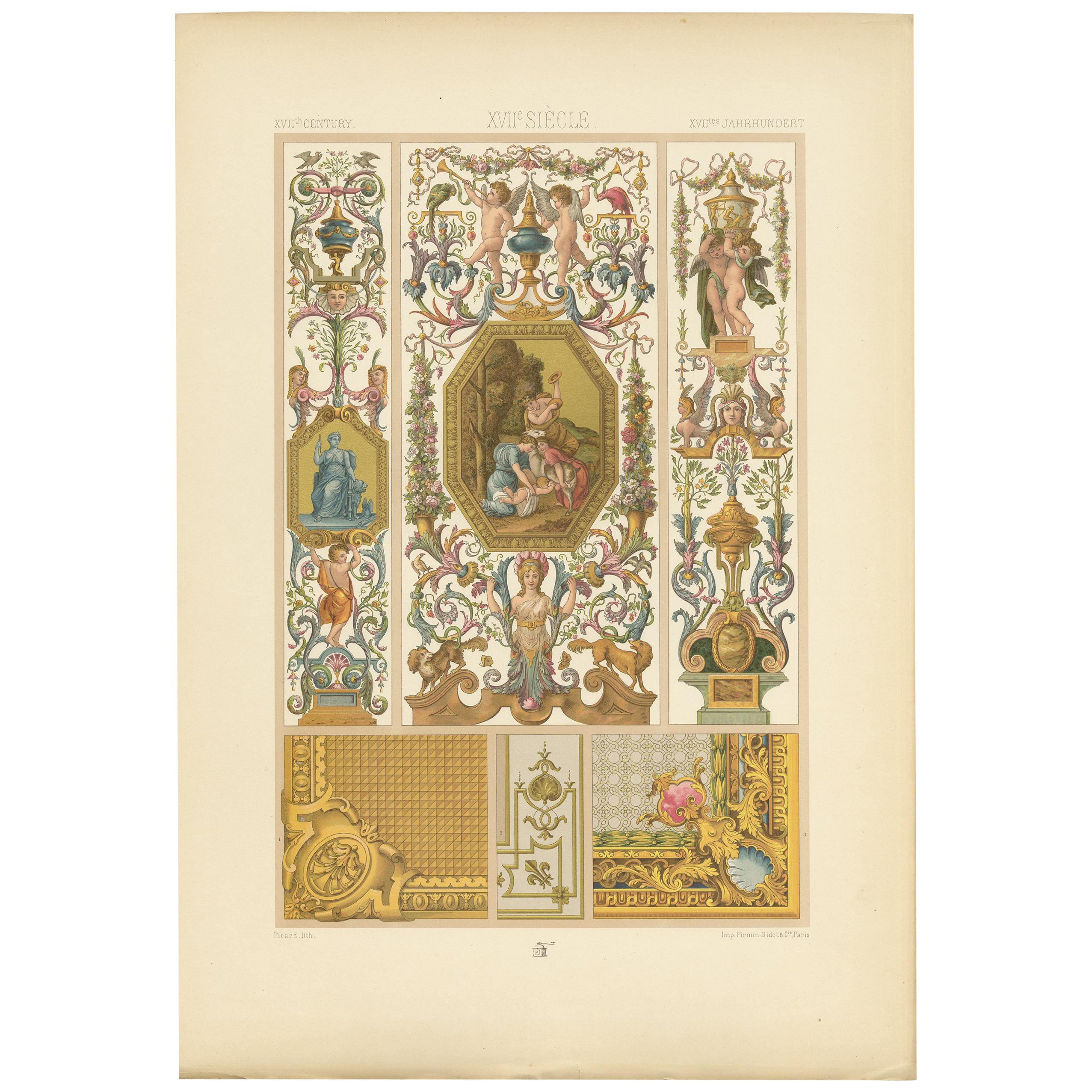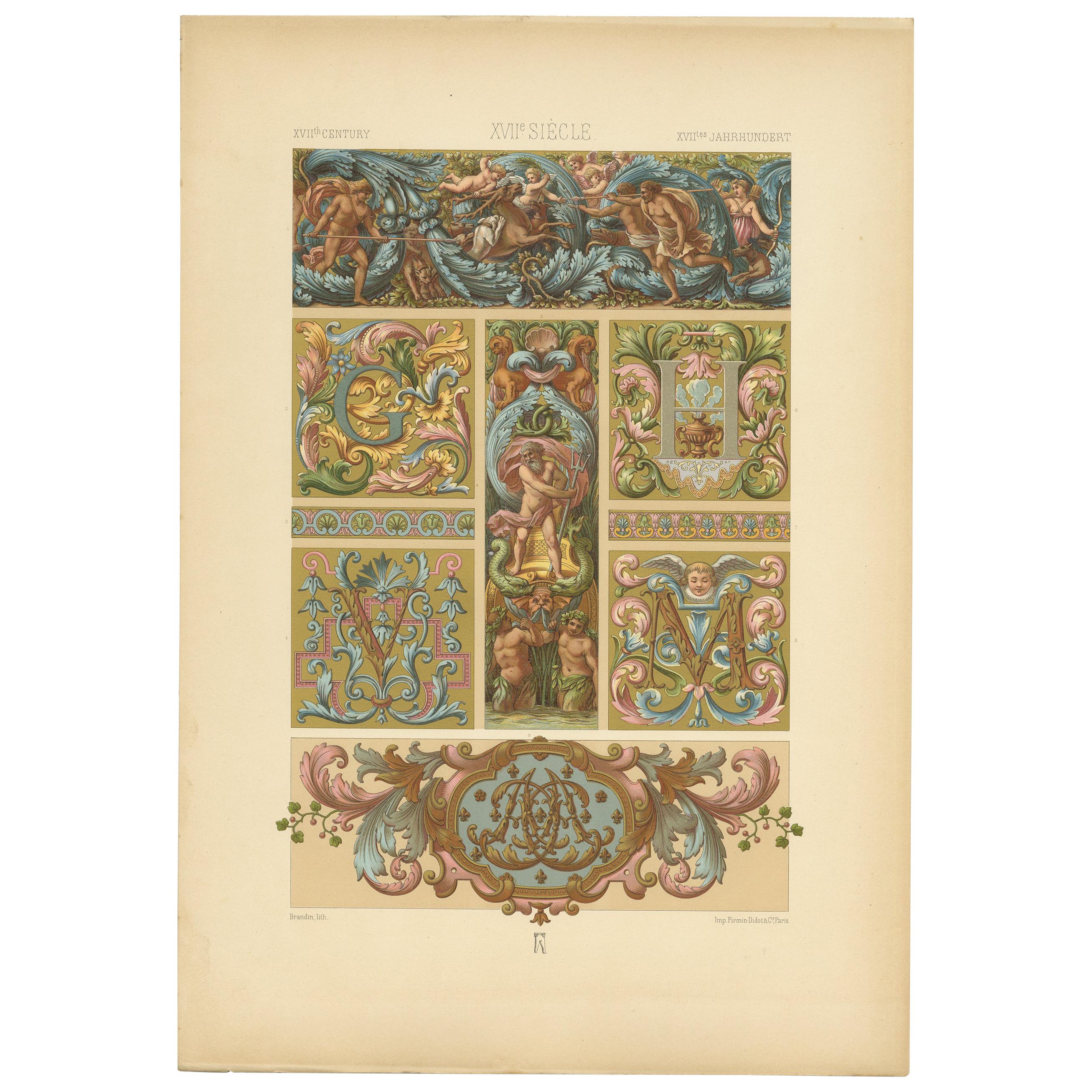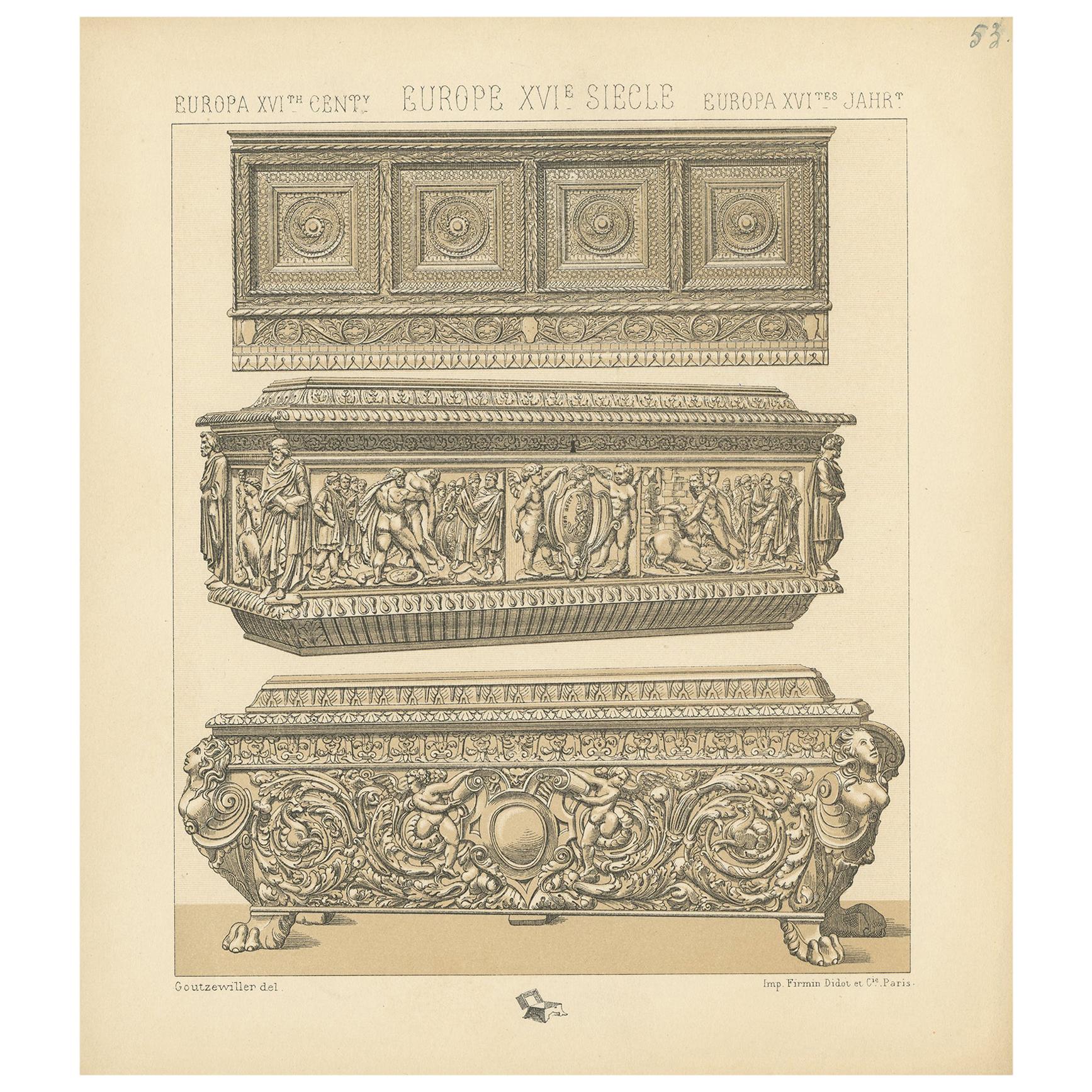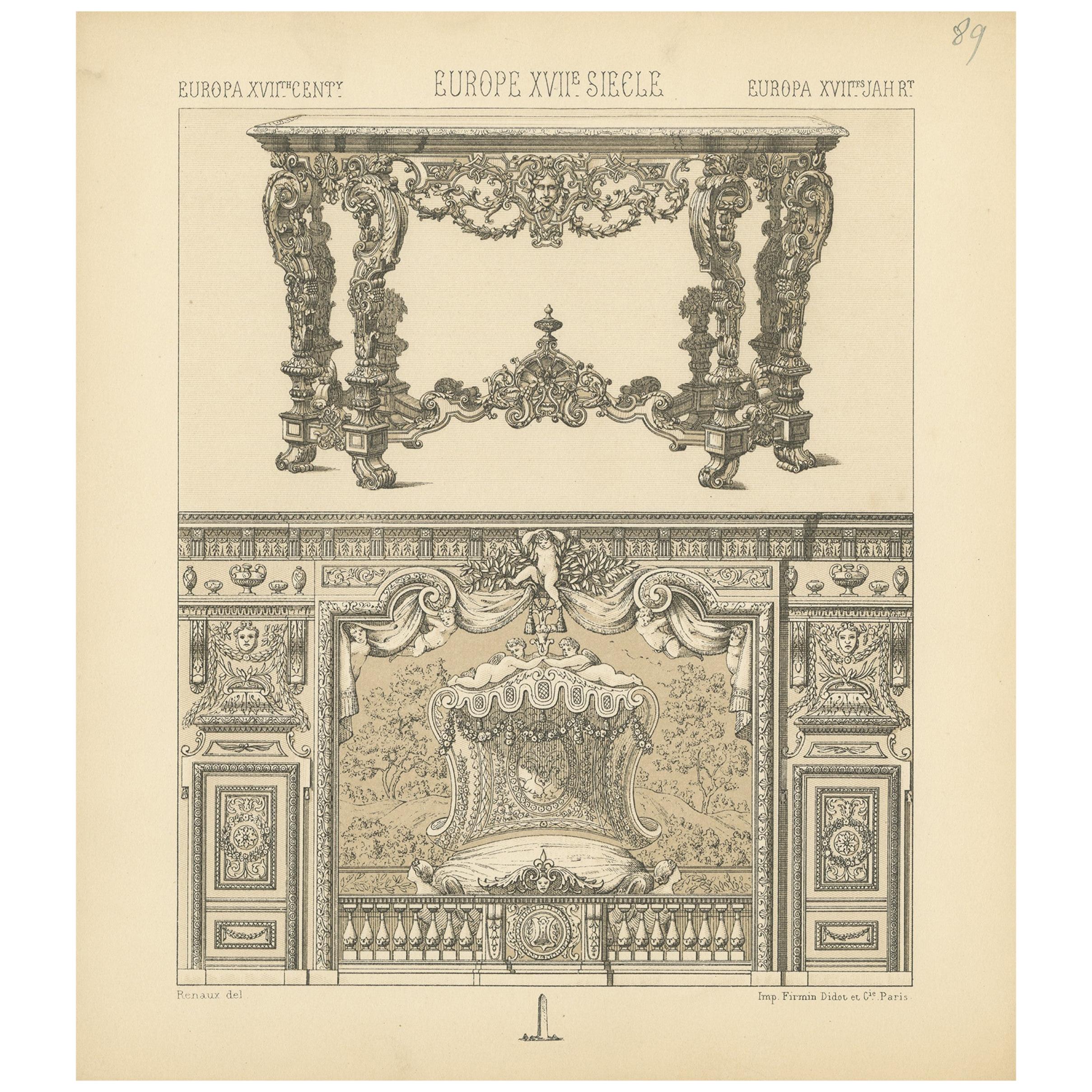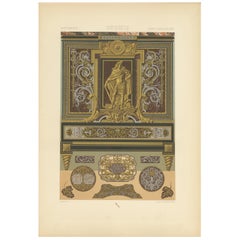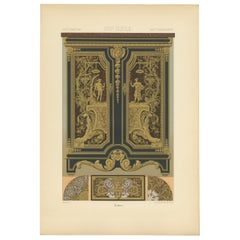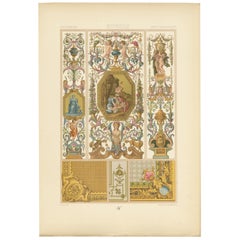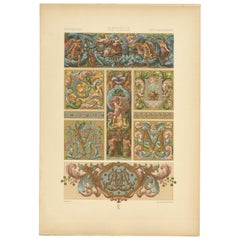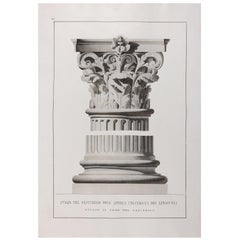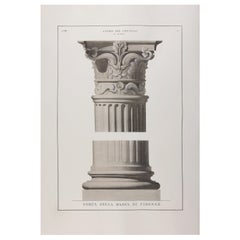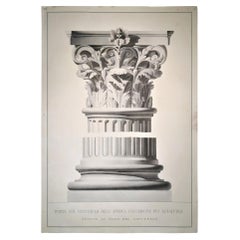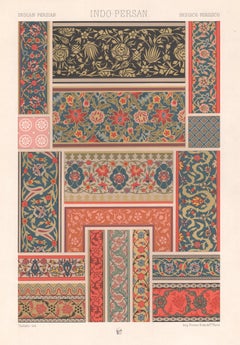Items Similar to Pl. 110 Antique Print of 17th Century Console Table by Racinet, circa 1890
Want more images or videos?
Request additional images or videos from the seller
1 of 5
Pl. 110 Antique Print of 17th Century Console Table by Racinet, circa 1890
$143.66
$179.5820% Off
£105.97
£132.4720% Off
€120
€15020% Off
CA$199.05
CA$248.8120% Off
A$216
A$27020% Off
CHF 114.46
CHF 143.0820% Off
MX$2,649.12
MX$3,311.4020% Off
NOK 1,416.44
NOK 1,770.5520% Off
SEK 1,338.46
SEK 1,673.0820% Off
DKK 913.78
DKK 1,142.2220% Off
About the Item
Antique print titled '17th Century - XVIIc Siècle - XVIILes Jahrhundert'. Chromolithograph of console table by Charles - Andre Boulle with metallic inlay ornaments. This print originates from 'l'Ornement Polychrome' by Auguste Racinet. Published, circa 1890.
- Dimensions:Height: 16.34 in (41.5 cm)Width: 11.42 in (29 cm)Depth: 0.2 in (5 mm)
- Materials and Techniques:
- Period:
- Date of Manufacture:circa 1890
- Condition:General age-related toning. Minor wear, blank verso. Please study image carefully.
- Seller Location:Langweer, NL
- Reference Number:Seller: BG-12550-2101stDibs: LU3054321963282
About the Seller
5.0
Recognized Seller
These prestigious sellers are industry leaders and represent the highest echelon for item quality and design.
Platinum Seller
Premium sellers with a 4.7+ rating and 24-hour response times
Established in 2009
1stDibs seller since 2017
2,622 sales on 1stDibs
Typical response time: <1 hour
- ShippingRetrieving quote...Shipping from: Langweer, Netherlands
- Return Policy
Authenticity Guarantee
In the unlikely event there’s an issue with an item’s authenticity, contact us within 1 year for a full refund. DetailsMoney-Back Guarantee
If your item is not as described, is damaged in transit, or does not arrive, contact us within 7 days for a full refund. Details24-Hour Cancellation
You have a 24-hour grace period in which to reconsider your purchase, with no questions asked.Vetted Professional Sellers
Our world-class sellers must adhere to strict standards for service and quality, maintaining the integrity of our listings.Price-Match Guarantee
If you find that a seller listed the same item for a lower price elsewhere, we’ll match it.Trusted Global Delivery
Our best-in-class carrier network provides specialized shipping options worldwide, including custom delivery.More From This Seller
View AllPl. 108 Antique Print of 17th Century Metallic Inlay by Racinet, circa 1890
Located in Langweer, NL
Antique print titled '17th Century - XVIIc Siècle - XVIILes Jahrhundert'. Chromolithograph of metallic inlay from furniture, France ornaments. This print originates from 'l'Ornement ...
Category
Antique Late 19th Century Prints
Materials
Paper
$143 Sale Price
20% Off
Pl. 109 Antique Print of 17th Century Metallic Inlay by Racinet, circa 1890
Located in Langweer, NL
Antique print titled '17th Century - XVIIc Siècle - XVIILes Jahrhundert'. Chromolithograph of metallic inlay from furniture, France ornaments. This print originates from 'l'Ornement ...
Category
Antique Late 19th Century Prints
Materials
Paper
$143 Sale Price
20% Off
Pl. 104 Antique Print of 17th Century Interior Decor by Racinet, circa 1890
Located in Langweer, NL
Antique print titled '17th Century - XVIIc Siècle - XVIILes Jahrhundert'. Chromolithograph of interior decor (Painting, tapestry, woodwork), France orna...
Category
Antique Late 19th Century Prints
Materials
Paper
$143 Sale Price
20% Off
Pl. 111 Antique Print of 17th Century from Interior Decor by Racinet, circa 1890
Located in Langweer, NL
Antique print titled '17th Century - XVIIc Siècle - XVIILes Jahrhundert'. Chromolithograph of from interior décor and illuminated choir books, France or...
Category
Antique Late 19th Century Prints
Materials
Paper
$119 Sale Price
33% Off
Pl. 53 Antique Print of European 16th Century Furniture by Racinet, circa 1880
Located in Langweer, NL
Antique print titled 'Europa XVIth Cent - Europe XVIe, Siecle - Europa XVItes Jahr'. Chromolithograph of European 16th century furniture. This print originates from 'Le Costume Histo...
Category
Antique Late 19th Century Prints
Materials
Paper
$95 Sale Price
20% Off
Pl. 89 Antique Print of European 17th Century Furniture by Racinet, circa 1880
Located in Langweer, NL
Antique print titled 'Europa XVIIth Cent - Europe XVIIe Siecle - Europa XVIItes Jahr'. Chromolithograph of European 17th century furniture . Th...
Category
Antique Late 19th Century Prints
Materials
Paper
$95 Sale Price
20% Off
You May Also Like
Italian 19th Century Big Size Florence Architectural Hand-Coloured Print
Located in Scandicci, Florence
A rare extra-large print, printed on engraving paper with an antique star press and watercoloured by hand representing an antique capital. The capital'...
Category
Antique 1840s Italian Neoclassical Prints
Materials
Paper
Italian 19th Century Big Size Florence Architectural Hand-Colored Print
Located in Scandicci, Florence
A rare extra-large print, printed on engraving paper with an antique star press and watercolored by hand representing an antique capital. The capital's...
Category
Antique 1840s Italian Neoclassical Prints
Materials
Paper
Italian 19th Century Big Size Florence Architectural Hand-Colored Print
Located in Scandicci, Florence
"Porta nel Vestibolo dell'antica Università dei Lanaioli - Studio al Vero del Capitello"
A rare extra-large print, printed on engraving paper with an antique star press and watercolored by hand representing an antique capital...
Category
Antique 1840s Italian Neoclassical Prints
Materials
Paper
Indian-Persian, French antique 19th century Racinet art design lithograph print
Located in Melbourne, Victoria
'Indian-Persian - Indo-Persian - Indisch-Persisch'
Late 19th century interior design chromolithograph, from Racinet’s ‘L’Ornement Polychrome’, 1887. Published in Paris.
Albert Raci...
Category
Late 19th Century French School Interior Prints
Materials
Lithograph
Middle Ages, French antique 19th century Racinet art design lithograph print
Located in Melbourne, Victoria
'Middle Ages - Moyen-Age - Mittel Alter'
Late 19th century interior design chromolithograph, from Racinet’s ‘L’Ornement Polychrome’, 1887. Published in Paris.
Albert Racinet's 'L' ...
Category
Late 19th Century French School Interior Prints
Materials
Lithograph
Russian, French antique 19th century Racinet art design lithograph print
Located in Melbourne, Victoria
'Russian - Russe - Russisch'
Late 19th century interior design chromolithograph, from Racinet’s ‘L’Ornement Polychrome’, 1887. Published in Paris.
Albert Racinet's 'L' Ornement Pol...
Category
Late 19th Century French School Interior Prints
Materials
Lithograph
More Ways To Browse
Piranesi Set
Tyler Graphics
Used Furniture Anchorage
Used Victoria Birds
Vintage Botanical Print Sets
William Daniell
18th Century French Lithograph
Almery Lobel Riche
Antique Furniture Islington
Antique Wolf Traps
Audubon Parrots
Bartlett Engravings
Bloch Fish
Bosnian Artists
By J Murray
Charley Harper Serigraph
Christian Wagner
Copper Prints Of Italy
